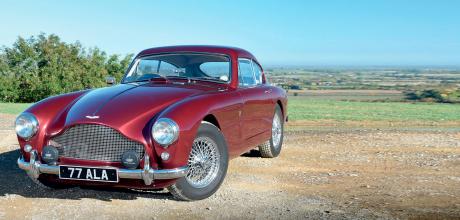1958 Aston Martin DB Mk III 2.9
The final update of the DB2 series, the DB Mk III from 1957, was the first production Aston Martin to feature the now familiar shape of radiator grille making it an important model in the company’s past. We look at the car’s development, explaining why it’s more than just a grille before driving a beautiful example.
DB MK III MODEL PROFILE
GETTING IN SHAPE
WORDS & PHOTOGRAPHY PAUL WALTON
As the first road car to use the definitive Aston Martin grille, laying the foundations for the DB4, the Mk III is an important model in the company’s long history. We explain its importance before driving a 1958 example
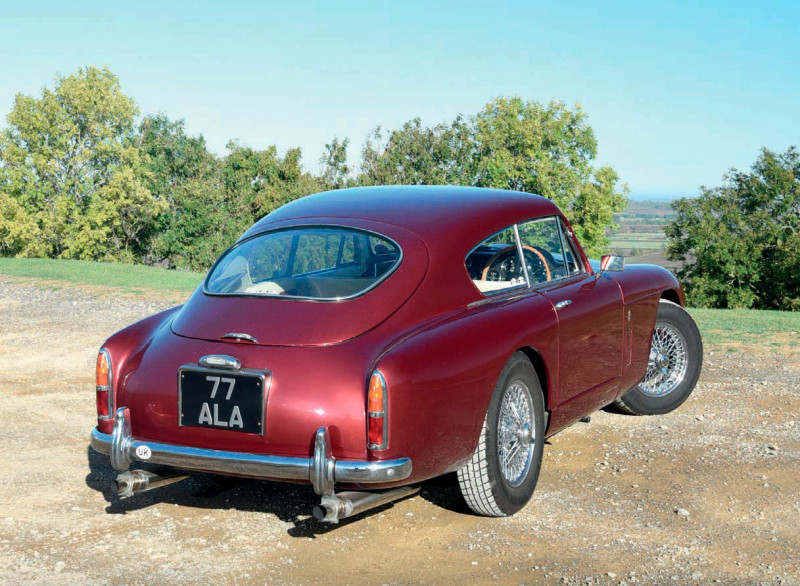
Together with the Porsche 911’s distinctive profile and the Austin Allegro’s famously square steering wheel, the Aston Martin grille is one of the most famous and identifiable shapes in automotive design. Seventy-five years after the definitive outline was introduced on a road car, it now defines the models that feature it and the company that makes them. Yet it didn’t happen overnight, taking almost a decade of refinement and evolution before it finally became the shape we know today.
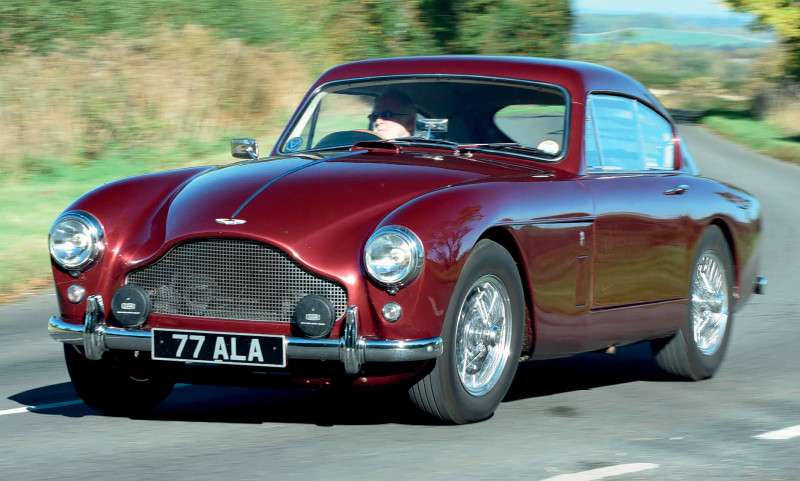
By arriving just before Aston’s most influential and iconic series of cars, the first road model to feature the grille – the DB Mk III from 1957 – has never truly received the recognition or place in the company’s history it so clearly deserves. The now familiar grille design has its origins in the first Aston Martin model of the David Brown era, the rare 2-Litre Sports from 1948. The work of long-time Lagonda designer, Frank Feeley, the nose was dominated by a large, upright radiator grille with two smaller vents low down on either side. When the DB2 arrived in 1950, this distinctive design was kept, the lower vents later amalgamated into the main grille creating the rough shape we know today, albeit taller, wider and more angular.
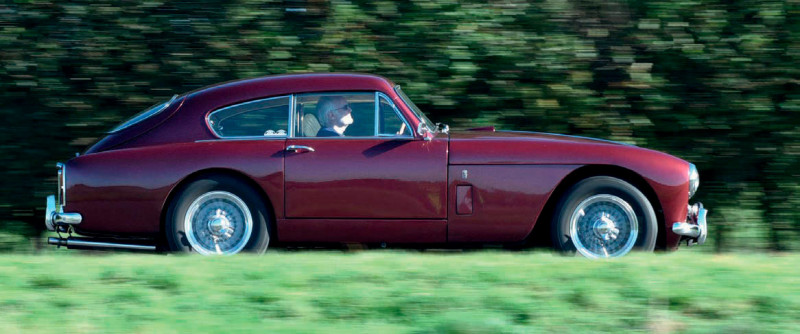
The first grille that combined all three elements close to how we know it today was for the DB3 racing car from 1951, but it was narrower and less shapely than the eventual production version. It wasn’t until the DB2/4 was updated in 1957, resulting in the DB Mk III, that the definitive Aston grille arrived. Although similar to the DB3’s, the outline was much rounder especially across the top. Over 75 years later, the company still uses a grille shape similar to the Mk III’s for all of its cars, making the model an important moment in the company’s post-war history.
Yet the car was more than just a grille since it received several key mechanical updates as part of the refresh, most importantly to the W.O. Bentley-designed straight-six engine. The unit had already been enlarged from 2.6 to 2.9 litres in 1952 – originally for the DB3 and later used by the DB2/4 road car the following year – but Aston’s chairman, (Sir) David Brown, realised the unit wouldn’t last forever in its original configuration. In 1954 he employed a young Polish engineer, Tadeusz ‘Tadek’ Marek, who had previously worked for Fiat, General Motors and Austin, to upgrade the engine. Marek comprehensively re-engineered the engine giving it a new stiffer block with extra webbing on the crankcase, a stiffer crankshaft and cylinder liners that were seated at the top to make fitting easier. A new Hoburn-Eaton oil pump was used with an enlarged sump and new timing chain. At the top of the engine, there were bigger valves and ports reshaped nearer to the style used for the DB3S racing car. Finally, 14mm spark plugs replaced the old 10mm versions and a new inlet manifold was designed to take twin 1.75in SU carburettors. With a simple exhaust system, the revised engine (known internally as the DBA) produced 162bhp compared to 140bhp of its DB2/4 predecessor while cars with the optional dual exhausts had 178bhp.

Other mechanical changes included a lighter flywheel and the clutch linkage was converted to a hydraulic self-adjusting operation. The four-speed gearbox was also refined to make it easier to use and Girling 12in front disc brakes were later made standard after originally being an optional extra.
Inside, the instruments were moved from the centre of the dash, as they had been in the DB2/4, to a new hooded panel directly in front of the driver while a parcel shelf was fitted in front of the passenger. Outwardly, the rear lamps were restyled, which together with the new nose, made the otherwise identical car appear larger than the previous DB2 models.
Plus, in terms of performance, drivability and usability, these changes made the Mk III a huge improvement over its immediate predecessor. And so, despite costing over £3,000 in 1957 making it £200 more than the DB2/4 and a grand over the-then new Jaguar XK 150 fixedhead coupe 3.4, the critics were still impressed by the new car. “The latest Aston Martin can be placed among the select group of the world’s fastest and safest cars,” said Autocar magazine at the end of its comprehensive report in the 27 December 1957 issue. “It also enjoys those indefinable qualities which are manifested as character and which instil confidence and affection in the owner.”
With such high praise, the car was unsurprisingly popular with a healthy 511 produced between March 1957 and July 1959. A tiny figure by today’s standards, it still made the Mk III one of the best-selling Aston Martins at the time. But positive magazine reports weren’t the only time when a mention of the Mk III in print helped with sales.
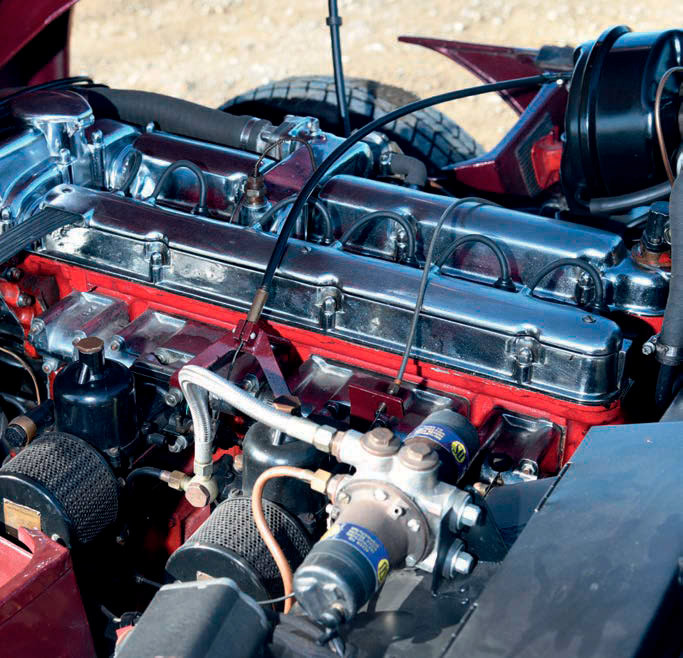
Although author Ian Fleming got its name wrong, the car featured in the seventh James Bond novel, Goldfinger, from 1959. The first time the British spy had driven an Aston, it was the origins of the long and famous association with the marque that continues today. “Bond had been offered the Aston Martin or a Jaguar 3.4,” wrote Fleming in Goldfinger. “He had taken the D.B.III. Either of the cars would have suited his cover – a well-to-do, rather adventurous young man with a taste for the good, the fast things of life. But the D.B.III had the advantage of an up-to-date triptyque, an inconspicuous colour – battleship grey – and certain extras which might or might not come in handy.” Goldfinger was the sole book in which Fleming gave Bond’s car several gadgets, with his Aston featuring switches to alter the type and colour of the front and rear lights, reinforced steel bumpers, a Colt .45 in a hidden compartment under the driver’s seat and a homing beacon. More importantly, just as the later films would for the DB5, the book made the Mk III appear fast, exciting and exotic.
“James Bond flung the D.B.III through the last mile of straight and did a racing change down into third and then into second for the short hill before the inevitable traffic crawl through Rochester. Leashed in by the velvet claw of the front discs, the engine muttered its protest with a mild back-popple from the twin exhausts.” This first association with Bond together with the now familiar grille and heavily updated engine makes the DB Mk III an important car in Aston Martin’s history and one I’m excited to try. The 1958 saloon seen here is a perfect example of the breed, the metallic red paint highlighting its handsome lines while that big, famous grille dominates the nose making its heritage known faster than any badge could. Owned for over two decades by marque enthusiast, Adrian Chettle, who had always wanted a DB Mk III after seeing one in the Seventies while still an apprentice in the motor industry. Superficially restored in the Nineties by only the fourth owner, when Adrian bought the car in 2002 it was missing several parts and much of the reassembly had been completed incorrectly. Over the last 20 years Adrian has had most of the mechanical and suspension parts renewed and now regularly drives the car all over Europe.
When he kindly offers me a drive and I slip easily behind the wheel, I begin to understand how that’s physically possible. The spacious and comfortable interior together with the large boot and hatchback-style rear opening makes the Mk III as usable as any modern sports car. Although Fleming didn’t go into this kind of detail in Goldfinger, I’m sure Bond would have had enough space for his many dinner jackets, smart shoes and weapon collection.
The art deco-style sweep of the binnacle and the layout of the dials within is simple, stylish and identical to the DB4 Series V Vantage I drove in issue three and similar to the DB6 I compared against an E-type in issue two. Easy to use, as Autocar said simply yet clearly in late 1957, “Location of the controls and the instruments is splendid.”
The 2.9-litre straight-six fires the moment I hit the starter button, immediately settling down to a meaty thrum. Thanks to the torquey and free-revving nature of the Marek-redesigned straight-six, when I squeeze the throttle even a fraction the resultant acceleration arrives in an instant, feeling remarkably forceful for a car that is coming up to 65 years old. When Autocar tested the Mk III in late 1957 it recorded the car’s 0-60mph time of 9.7 seconds, a little faster than the DB2/4, but a second slower than it achieved with the larger engined Jaguar XK 150 3.4 a few months later. It sounds great too; a raspy, throaty exhaust note that’s never grating but always lets you know it’s there.
Due to the engine’s tremendous amount of torque, changing gear for slow bends isn’t always a necessity but it misses one of the Mk III’s high points, the surprisingly smooth and easy-to-use four-speed ‘box with overdrive. The accuracy of the changes together with its short, sharp shifts further facilitates the Aston’s image of being a true performance car. The steering has little of the vagueness many sports cars from the era, such as the Austin-Healey 3000 and Jaguar XK 150, can suffer from. Although light, its accuracy enables me to scythe through corners with ease before I nail the throttle at the exit and feel that wonderfully intoxicating surge of old-fashioned grunt only cars from this era can off er.
The Mk III might be known today as the first road car to feature Aston’s famous grille, but I’d argue it’s significant for another reason. Although it was again designed by Frank Feeley (his last before he left AML in 1956) and the body produced by another Brown-owned company, Tickford, in terms of styling, interior layout and performance, it clearly laid the foundations for Aston’s later Touring-designed models that started with the DB4 in 1959. Considering the impact these cars had not just on Aston but British culture, it makes the Mk III a significant car for bigger reasons than just the grille. So, it wasn’t just the radiator grille that was getting into shape when Aston Martin introduced the DB Mk III in 1957 but the company as a whole.
Thanks to: Owner of the DB Mk III featured here, Adrian Chettle
TECHNICAL DATA 1958 Aston Martin DB Mk III 2.9
- Engine: 2,922cc straight-six
- Max Power: 162bhp
- Max Torque: 180lb ft
- Top speed: 120mph
- 0-60mph: 9.3secs
- Transmission: 4-spd manual
- Price new: £3,076
- Value now: £175,000


